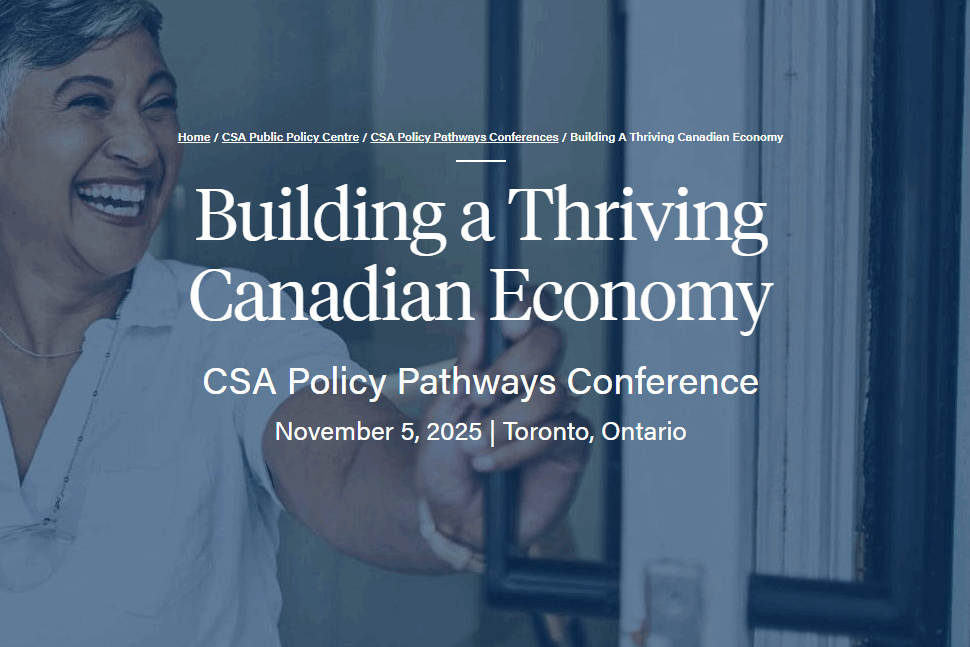By Matthew Mendelsohn | This post first appeared in The Hill Times
If you came down from Mars and followed Canadian news this past year, you would think our economic well-being was contingent on natural resources, energy, and infrastructure development. And that, in the future, we will need to complement that foundation with a focus on tech, innovation, and artificial intelligence.
This strategy misses too much, and will leave Canadians more vulnerable to the Trump administration’s ongoing threats to inflict pain on Canadians and our economy.
Obviously, successfully executing on private- and public-sector investment strategies on big natural resource and infrastructure projects, and deploying AI in ways that don’t threaten democracy or exacerbate inequality, will be crucial to Canada’s long-term prosperity.
But if you walk into almost any community across the country, the economic hum isn’t coming from a mine or an AI lab. It comes from the cafés, dental offices, repair shops, health-care practitioners, educators, small manufacturers, and coaches of all kinds. Local businesses and non-profits sustain daily life and economic well-being. They are important sources of economic activity. But, thus far, the federal government’s economic priorities have not focused on these activities.
It is not surprising.
The extraction, export, and processing of natural resources have been important to Canada’s economy for hundreds of years. Our export-oriented resource sector and primary industries will remain important to our future, and powerful corporate interests have loudly expressed their dissatisfaction with federal policy on climate and development over the past decade.

And Canadian tech entrepreneurs—also influential with the federal government—are right that Canada has not been strategic about tech-led economic growth and that we’ve allowed our intellectual property to be sold off. Canada does have many advantages in AI that we should exploit in order to build great tech companies.
But these two priorities are clearly not going to be enough. Really smart investment strategies on natural resources and AI alone will not get us through this moment of geopolitical rupture.
Most Canadian jobs are not directly impacted by tariffs and most of our businesses aren’t export-oriented. Small and medium-sized enterprises (SMEs) contribute just over half of Canada’s GDP and employ 64 per cent of our people. Smaller businesses, locally owned enterprises, not-for-profits, and social enterprises employ and reinvest locally, act as important local economic infrastructure and provide services that are crucial for well-being. They are automatic stabilizers in the face of tariff threats that are outside our control.
Yes, there is a need to mobilize large pools of capital to invest more in big national projects and in new sectors. But there are also capital and investment gaps for smaller, locally owned businesses and not-for-profits.
Canada’s banking regulator, the Office of the Superintendent of Financial Institutions (OFSI), has begun to highlight some of these financing gaps. According to OSFI, Canadian banks are in a position to extend nearly $1-trillion in additional loans to SMEs while staying above their capital minimums. This financing is not reaching many small- to medium-sized enterprises that need it, in part because OSFI’s existing risk-weighting rules make those loans less attractive.
The Competition Bureau has also recently launched a consultation on the state of financing of SMEs, with a particular focus on access to loans, highlighting the growing concern that smaller businesses do not have access to affordable financing and that our existing commercial banks may be part of the problem. Social enterprises, not-for-profits, and co-ops have long highlighted that their financing needs are overlooked by mainstream institutions.
Pension funds and philanthropic foundations have also been called out for failing to invest sufficient Canadian capital into local communities. With trillions of dollars of assets under management, the Department of Finance suggests that even a small reallocation towards domestic investment would produce enormous net-new economic activity in Canadian communities, with little new risk.
And perhaps, most importantly, regardless of what the banks and pension funds do, the federal government needs to step up to support community and social finance infrastructure.
Canada’s social finance leaders have already highlighted the kinds of activities that could be funded. They include recapitalizing the Social Finance Fund, creating loan guarantee facilities for local enterprises and not-for-profits, and making it easier for employees, new entrepreneurs, and communities to purchase businesses from retiring owners and keep them local.
These choices do not require the federal government to spend new funds. They require policy change and, in some instances, more creative uses of the federal balance sheet to finance local economic activities.
The federal government is undertaking some steps to align with this vision: the $10-billion in loan guarantees to Indigenous communities to enable equity in natural resource and other major projects, and the partnership between First Nations Bank and the Business Development Bank of Canada to facilitate the acquisition of existing businesses by Indigenous communities are two recent examples. But the federal government must do more to make low-cost capital available.
As the federal government focuses on big, new projects and sectors that are attracting huge pools of global investment, we have to also address the financing needs of local businesses and not-for-profits. We can build a more resilient economy by also investing in the sectors that dominate people’s daily lives.
Share with a friend
Related reading
What’s wrong with mainstream economics?
Mainstream, or “neoclassical,” economics still dominates how we teach, study and understand our economy, even though much of it doesn’t match reality. In this piece, economists Louis-Philippe Rochon and Guillaume Vallet explain why outdated economic ideas persist and how they can lead to harmful policies. They challenge five common myths about inflation, growth and inequality, showing that today’s economy is driven more by power and institutions than by perfect markets. As "heterodox" economists, they argue it's time for a new kind of economics that reflects how the real world actually works.
Building a thriving economy: CSA Policy Pathways Conference
The CSA Policy Pathways Conference convenes leaders, thinkers and changemakers across government, business, community and academia to confront the pressing questions shaping our economic future. How can we build resilience in the face of global uncertainty? What will it take to unlock innovation and ensure its benefits are broadly shared? How do we design policies that promote competition, inclusion, and financial security? Join us on November 5, 2025, in Toronto, as we explore how we can take bolder steps toward a more resilient, innovative and equitable economic future.
Creativity could be collateral damage of U.S. film tariff
When U.S. tariffs threaten to strike creativity and culture, we can't afford to stay quiet. SCP Fellow and POV executive director Biju Pappachan explores the implications of the U.S. imposing a tariff on foreign-made films and explains why this is the moment for Canada to stand up for its filmmakers, crews and cultural sovereignty. Film and television are not luxuries; cultural production is a strategic sector that delivers exports, jobs and soft power. Just as we negotiate for agricultural or industrial tariff exemptions, cultural production deserves equal protection.


